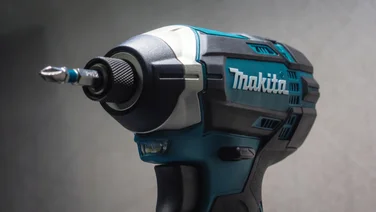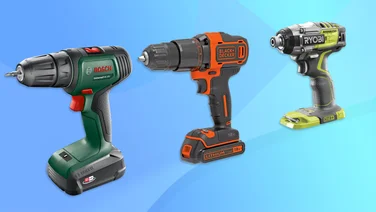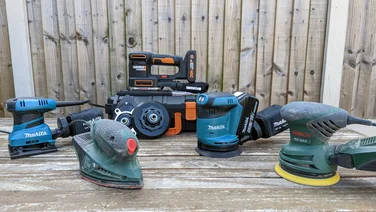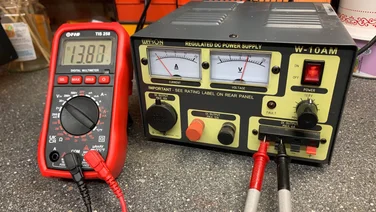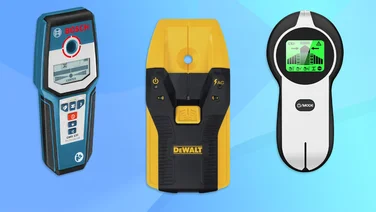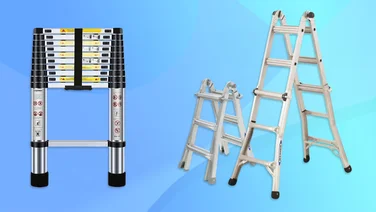To help us provide you with free impartial advice, we may earn a commission if you buy through links on our site. Learn more
- Best tile cutters: At a glance
- How to choose the best tile cutter for you
- How we test tile cutters
- The best tile cutters you can buy in 2023
- 1. Mac Allister 500W Corded Tile Cutter: Best electric tile cutter
- 2. Vitrex Pro Series Heavy Duty Tile Cutter: Best handheld tile cutter
- 3. MTC330 Tile Cutter 330mm: Best budget manual tile cutter
- 4. Vitrex Heavy Duty Tile Cutter 500mm: Best heavy-duty manual tile cutter
- 5. QEP Diamond Wheel Wet Tile Cutter 450W: Best budget electric tile cutter

Look around any home and youre bound to find tiles. Bathrooms, kitchens and many other locations generally use tiles to provide a hard-wearing finish to your home. Tiles are made from refined clay, meaning theyre tough and need specialist tools to cut. The best tile cutters on the market make trimming tiles an easy job and can save a lot of time along the way.
Tile cutters are either manual or electric, with a variety of different features included. Youll also find different tile cutters are recommended for different types of tile. It can be a mind-boggling choice, but our simple guide to the best tile cutters will make things easier.
Weve put together a buying guide to explain more about tile cutters and what they do, hopefully answering any questions you might have. But if you already know you want a tile cutter and just want recommendations on what to buy, scroll down to see our selection.
READ NEXT: Best cordless drill
Best tile cutters: At a glance
- Best handheld tile cutter: Vitrex Pro Series Heavy Duty Tile Cutter | £14
- Best budget manual tile cutter: MTC330 Tile Cutter | £15
- Best heavy-duty manual tile cutter: Vitrex Heavy Duty Tile Cutter | £33
- Best electric tile cutter: Mac Allister 500W Corded Tile Cutter | £70
How to choose the best tile cutter for you
There are numerous options on the market when it comes to choosing a tile cutter, but your key consideration should be the type and thickness of the tile youre going to cut.
Types of tile
Although there are a wealth of different types of tile available, these are the most common and widely used around the house:
Ceramic Ceramic tiles are extremely durable, making them a common choice for the home. They can be used in just about any room of the house, particularly kitchens and bathrooms, and come in hundreds of different styles.
Porcelain The other most common type of tile is porcelain, popular for its ability to emulate natural stone, brick or wood. This equally durable tile is all-purpose and even suitable to use outside, as it wont freeze, fade or crack.
Glass Glass tiles offer a clean aesthetic and are extremely stain resistant. However, they are far more fragile than ceramic and porcelain, and can easily chip along the edges.
Cement Cement tiles have been around since the 19th century and are extremely versatile. Unfortunately, theyre not easy to lay and need to be resealed at least once a month.
Marble Marble tiles are a more costly purchase, but they can add elegance and depth to a room. However, they require a lot of upkeep to keep pristine and are susceptible to scratches and stains, meaning a sealant is essential.
Granite This is another natural stone, though one thats cheaper than marble. However, its also prone to staining and needs a penetrative sealant to protect it.
You may also come across other types of tiles, including limestone, terracotta, travertine, quarry, slate and metal.
READ NEXT: Best wall filler
Manual or electric?
There are two types of tile cutter manual and electric. But which should you choose?
Choose a manual tile cutter if:
- Youre tiling a small space.
- You want a tile cutter thats easy to transport and set up.
- Youre only tiling a small area.
- You want a cutter that will take minimal effort.
- You only want to make straight cuts.
Choose an electric tile cutter if:
- You need bevelled cuts.
- Youre cutting heavy and/or delicate tiles.
- You need to make a range of cuts.
- You need to cut small widths of tile without any splintering.
- You want a good all-rounder.
How much should I spend?
Weve got tile cutters in our review priced from £14 to £70 and these different models will have different features that may or may not be useful to you. Our guide should give you plenty of options, whatever your budget.
How we test tile cutters
It might sound obvious, but we use tiles to test our tile cutters. We assess each cutter in a variety of ways, looking at ease of use, strength (how easily they snip through our chosen tiles), as well as what types of tiles they can cut. We give extra points to any tile cutters that can perform angled cuts and make a note of those that can only do straight line cuts. We also look at value for money though tile cutters only perform one job, theyre not all created equal. Our roundup ensures youre getting the best cutters for your money, no matter your budget or needs.
READ NEXT: Best jigsaw for DIY duties
The best tile cutters you can buy in 2023
1. Mac Allister 500W Corded Tile Cutter: Best electric tile cutter
Price: £70 | Buy now from B&Q

The Mac Allister tile cutter is a great electric option. There are probably better tile cutters out there, but youll be looking at professional grade models costing upwards of £700, so this is excellent for consumers dealing with a variety of tiles, including ceramic, quarry, terracotta, slate, porcelain, marble, granite and limestone.
Along with straight cuts, the cutter is capable of cutting diagonally as well as producing bevels (20mm maximum cutting capacity at a 90-degree bevel). It also has a 45-degree mitre guide for internal and external corner joints. The cutter has a foldable carry handle thats probably most useful for smaller hands and a cleverly designed magnetic safety switch to prevent the machine accidentally turning on when you plug it into a power source.
We found that this cutter produced smoother cuts than any of the manual tile cutters. However, despite the claim that the water re-circulation system ensures a clean workstation, we found that the cutter did produce a fair amount of mess. Wed therefore recommend using it either outside or in an area thats easy to sweep up.
Key specs Size: 186.5 (H) × 445mm (W); Power: Electric; Wheel material: 115mm diamond blade; Suitable for: Tiles up to 20mm thick/ceramic, quarry, terracotta, slate, porcelain, marble, granite and limestone
2. Vitrex Pro Series Heavy Duty Tile Cutter: Best handheld tile cutter

Price: £14 | Buy now from Wickes If youre looking for a no fuss pair of handheld tile cutters, Vitrexs cutter is a great choice. With a simple score and snap action, these cutters are simple to use and dont require any setting up at all.
The Vitrex handheld tile cutter is 200mm in length and manufactured from drop-forged steel with a 15mm offset jaw and a tungsten carbide cutting wheel. The cutting wheel is quite small, and theres no mention of it on the packaging, but you can be assured it is there! It may be small, but its tough you can use them on ceramic, marble, quarry, terracotta, and slate tiles.
Using the cutter is simple: using a metal ruler to keep things straight, mark the tile with the scorer. Then insert the tile in the jaws of the cutter, aligning the scored mark with the centre of the tool, and squeeze to snap the tile in two. You might hear these types of cutters also referred to as snappers for obvious reasons!
We did notice that we sometimes got an uneven break at the far end of the tile with larger tiles, so wed recommend only using these cutters with smaller tiles.
Key specs Size: 200mm; Power: Manual; Wheel material: Tungsten carbide; Suitable for: Ceramic, marble, quarry, terracotta and slate tiles up to 10mm thick
3. MTC330 Tile Cutter 330mm: Best budget manual tile cutter

Price: £15 | Buy now from Screwfix Screwfixs tile cutter is remarkably well priced, while still allowing you to cut tiles up to 330mm in length. This cutter also uses a simple score and snap technique, but with a large handle (unlike the Vitrex above) thats used to score and then apply the snapper to the tile.
We found the instructions on the box extremely clear (probably the best of all the cutters we tested) and the cutter produced a clean cut repeatedly. However, it could benefit from slightly better-oiled runners, and it didnt feel particularly substantial.
Again, using the cutter is simple: mark the tile and insert it into the cutter in line with the guide. Lower the handle to bring the scorer into contact with the tile, and push or pull the handle to score once along the line. Finally, lower the handle fully so that the snapper touches the tile and apply pressure to snap the tile in two.
You can also do diagonal cuts up to 230mm at a 45-degree angle, and the cutting wheel and breaker bar are both replaceable.
Key specs Size: 465 (L) × 140mm (W); Power: Manual; Wheel material: Tungsten carbide; Suitable for: Tiles up to 10mm thick/ceramic tiles
4. Vitrex Heavy Duty Tile Cutter 500mm: Best heavy-duty manual tile cutter

Price: £33 | Buy now from Toolstation Vitrexs heavy-duty tile cutter is a bit of a beast, capable of cutting tiles up to 500mm square and 12mm thick. Youve also got the option to make diagonal cuts on tiles up to 360mm.
The cutter has a nice sturdy construction and is made from steel. Its easy to use and even comes with an integral angle cutting guide. As with other similar cutters, youll need to mark a line on the tile where you want to cut. Then place the tile on the cutter bed and line up the mark with the centre point indicator. Applying light pressure to the handle, push down and score the tile once. Lastly, position the breaker bar to sit on top of the tile and push down gently to crack the tile.
A few users have noted that the breaker bar can lightly mark tiles, so we would recommend using masking tape to protect the tile before cutting.
Key specs Size: 680 (L) × 170mm (W); Power: Manual; Wheel material: Tungsten carbide; Suitable for: Tiles up to 12mm thick. Not suitable for porcelain tiles
5. QEP Diamond Wheel Wet Tile Cutter 450W: Best budget electric tile cutter

Price: £46 | Buy now from Toolstation Dont be fooled by the price of the QEP tile cutter this little cutter packs a big punch! Cutting to a depth of 23mm, it works with most common tiles and you can also use it with a dedicated porcelain blade (its supplied with a general purpose blade).
One of the most useful features of the QEP cutter is a fixed extension table that allows you to keep your tiles in place while youre cutting them. We also really liked the mitre and parallel guides – these made this a particularly easy cutter to cut straight lines with. The finish is extremely clean and its also easy to cut angles and bevels.
This is one of the noisier tile cutters weve come across, but it does its job extremely well. Do make sure to keep water in the reservoir and clean the bed from time to time to ensure its smooth running.
Key Specs Size: 340 × 305mm (table size); Power: Electric; Wheel Material: 110mm diamond blade; Suitable for: Tiles up to 23mm thick / Ceramic, quarry, terracotta, slate, porcelain, marble, granite, and limestone.

